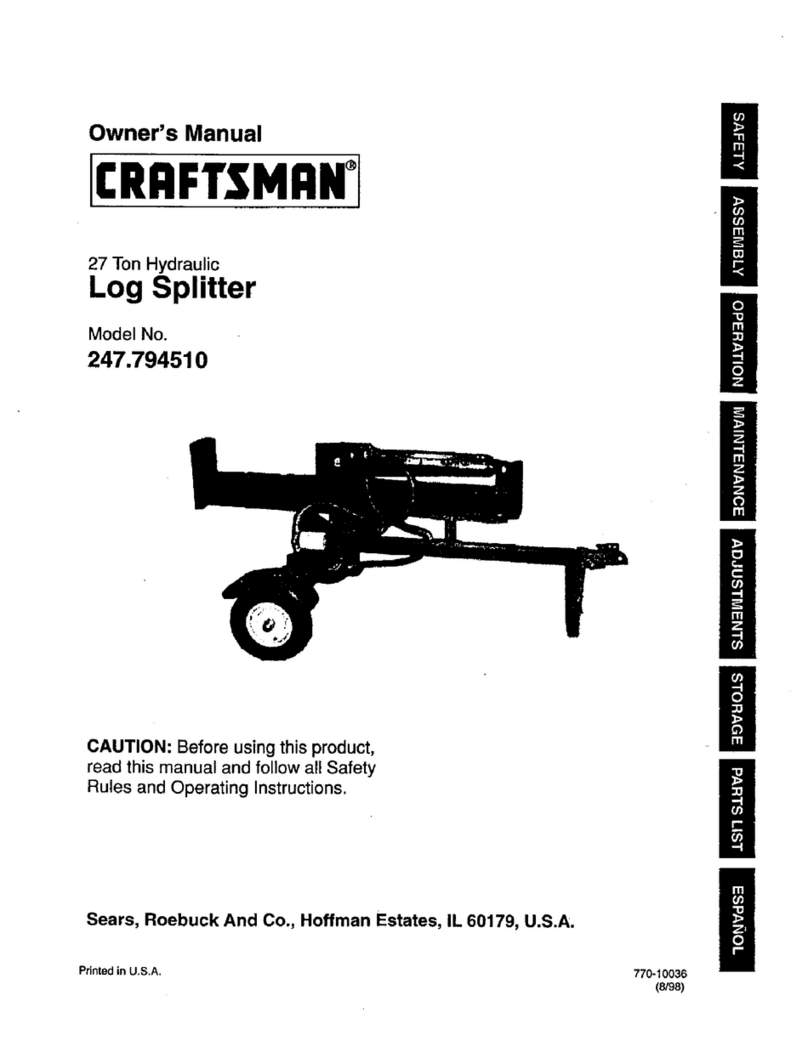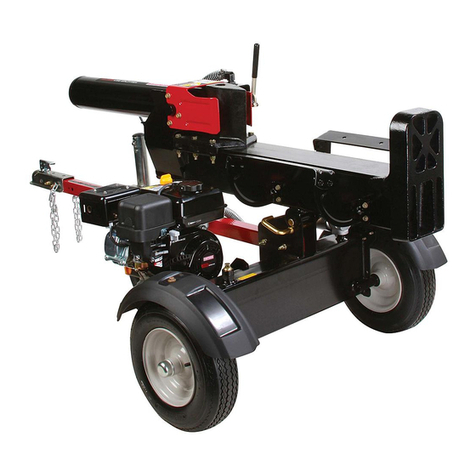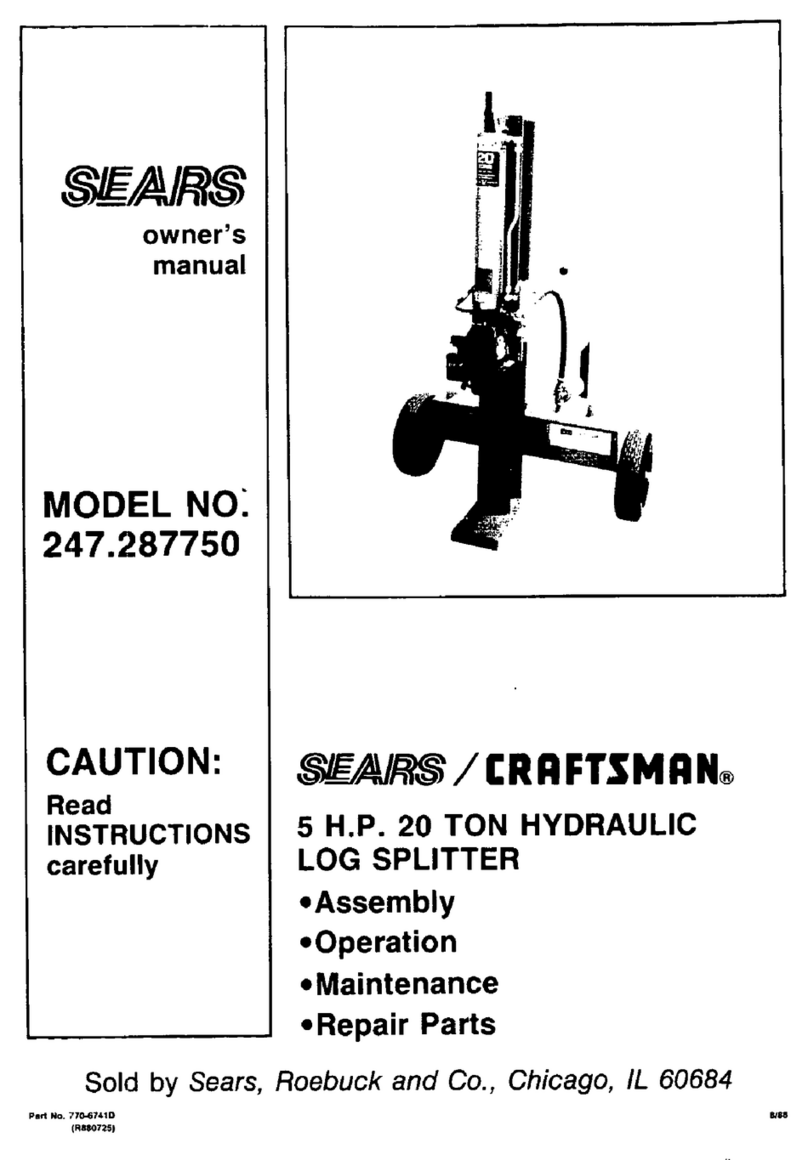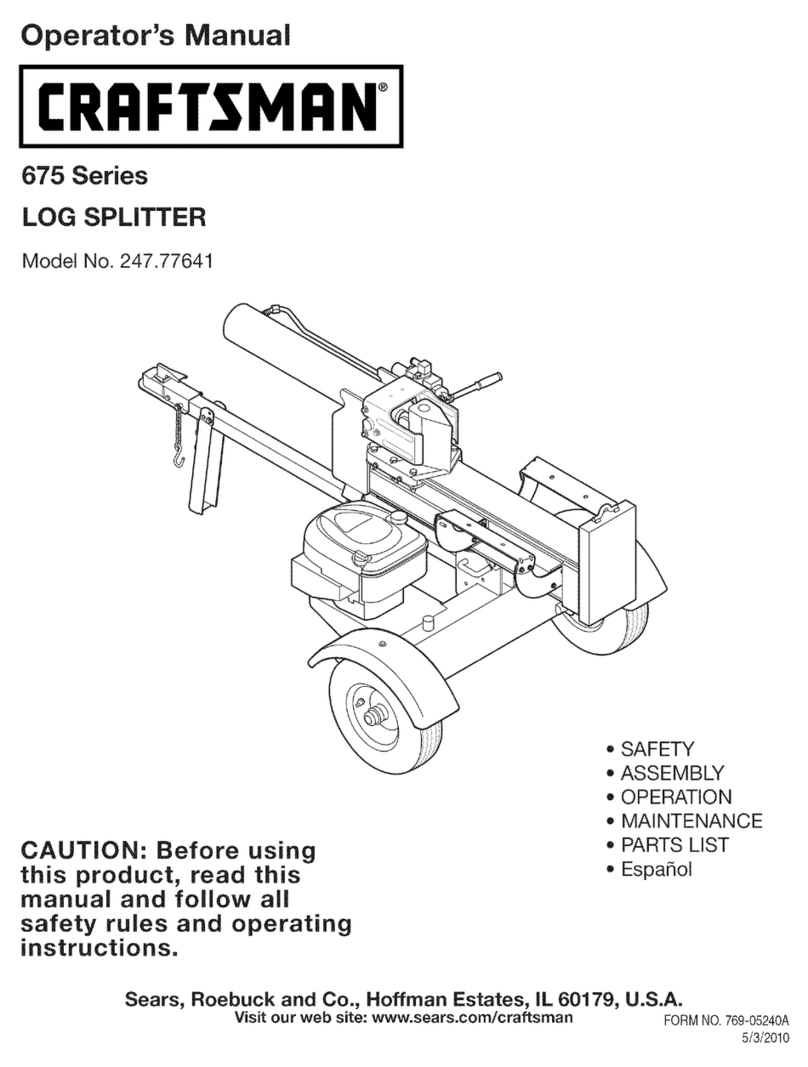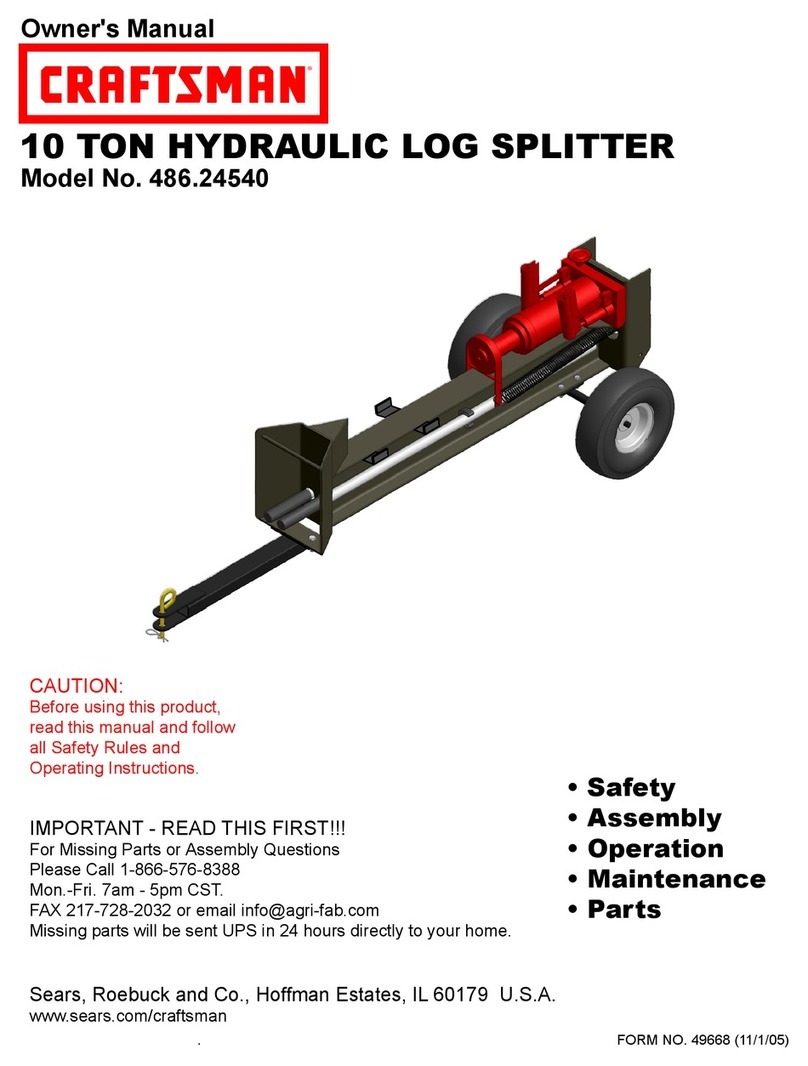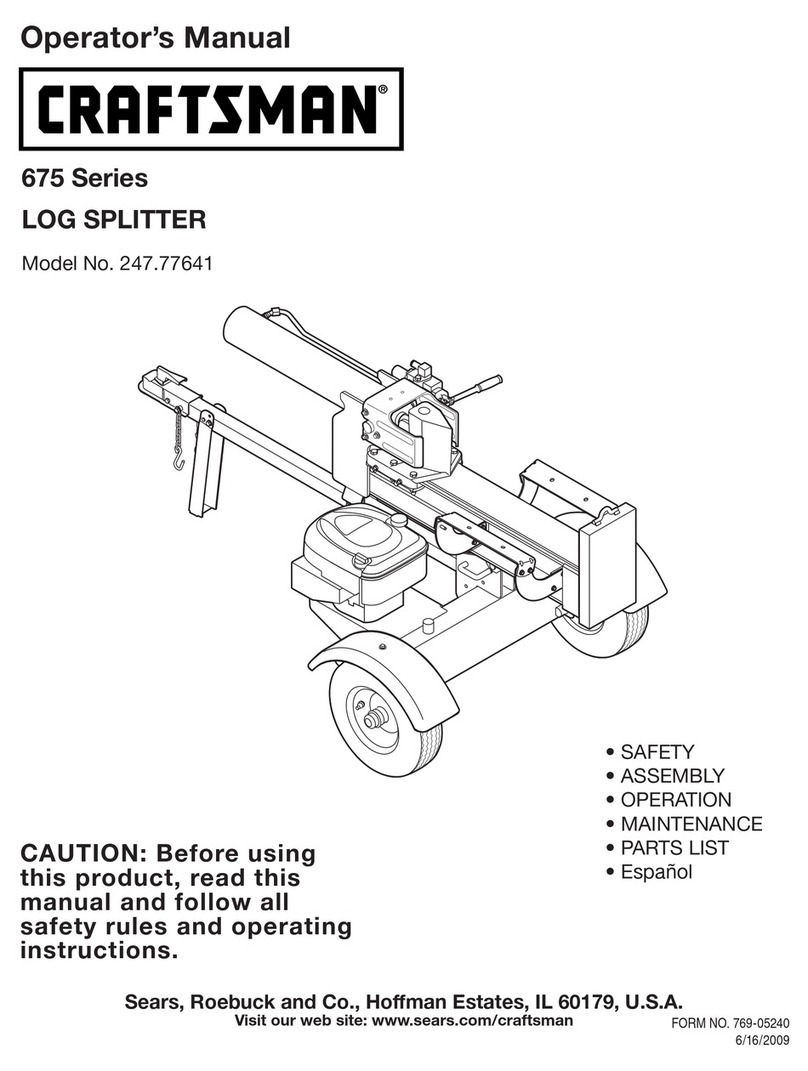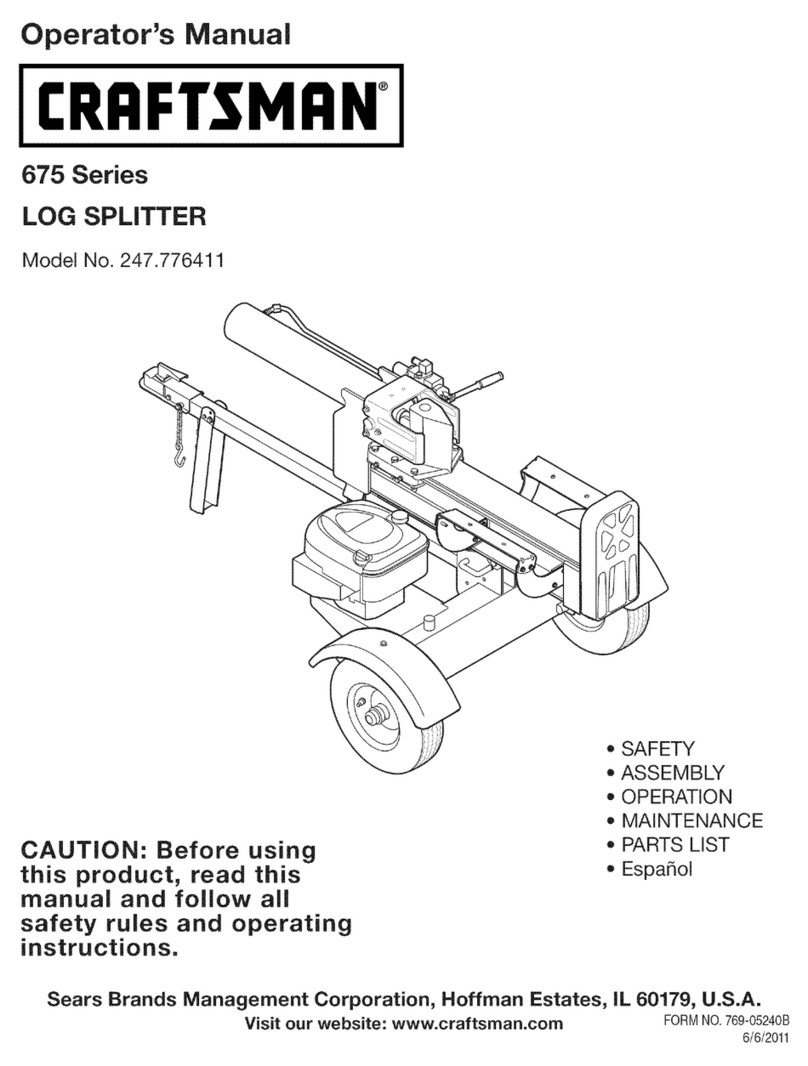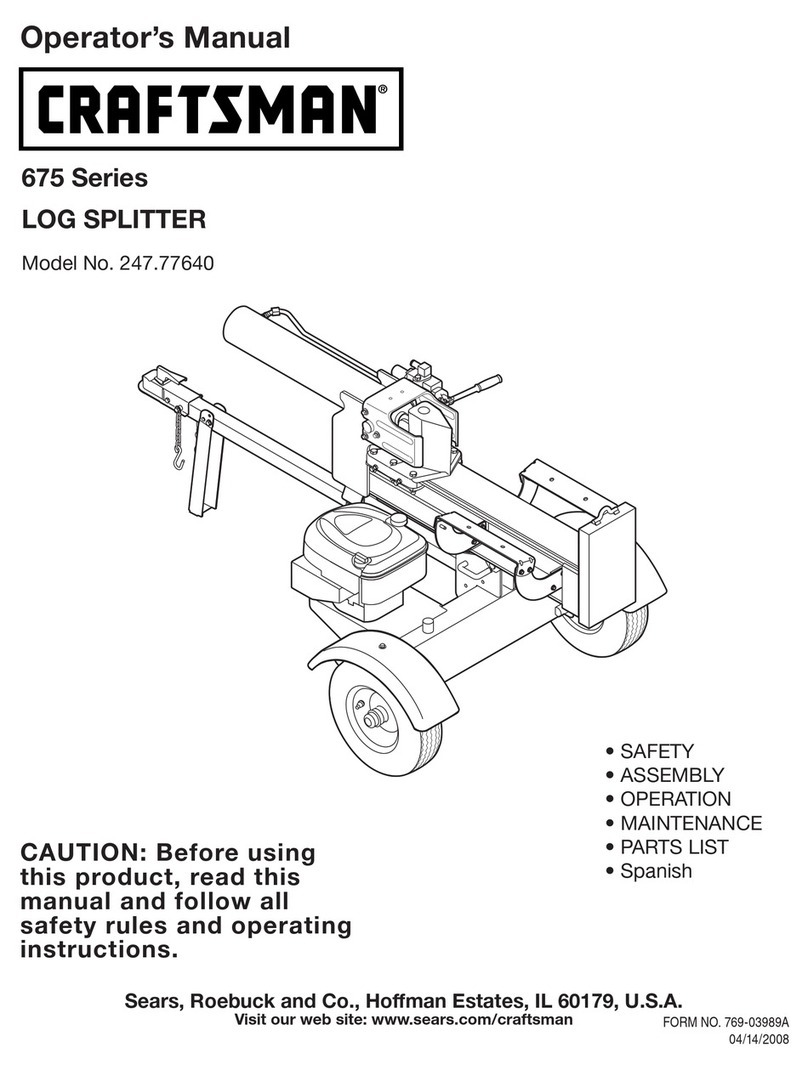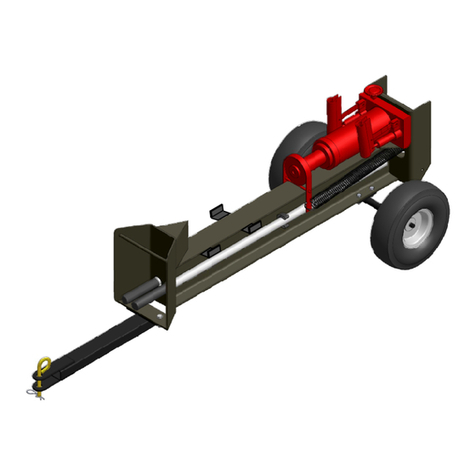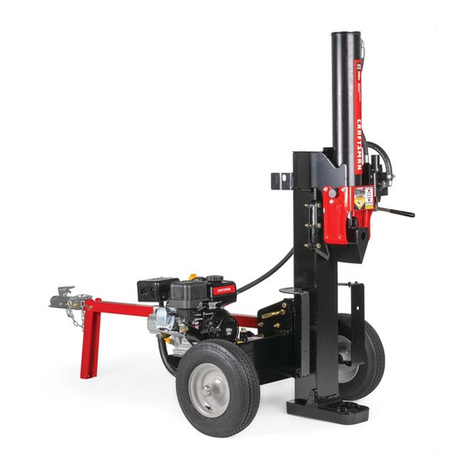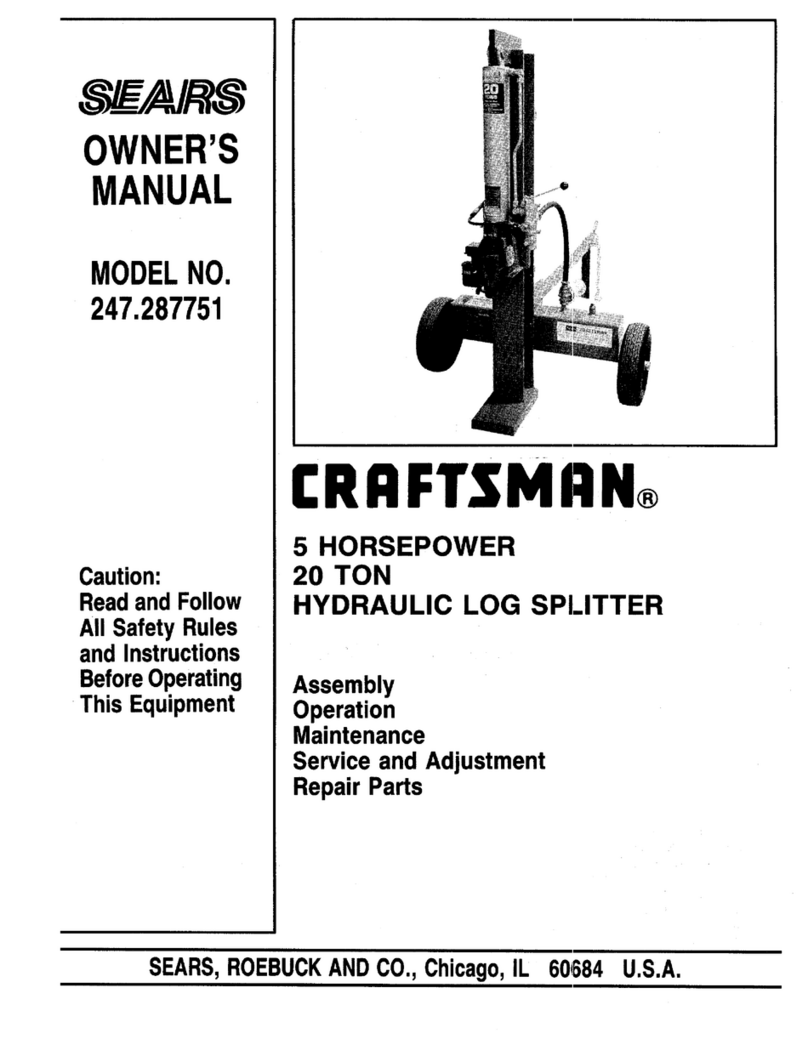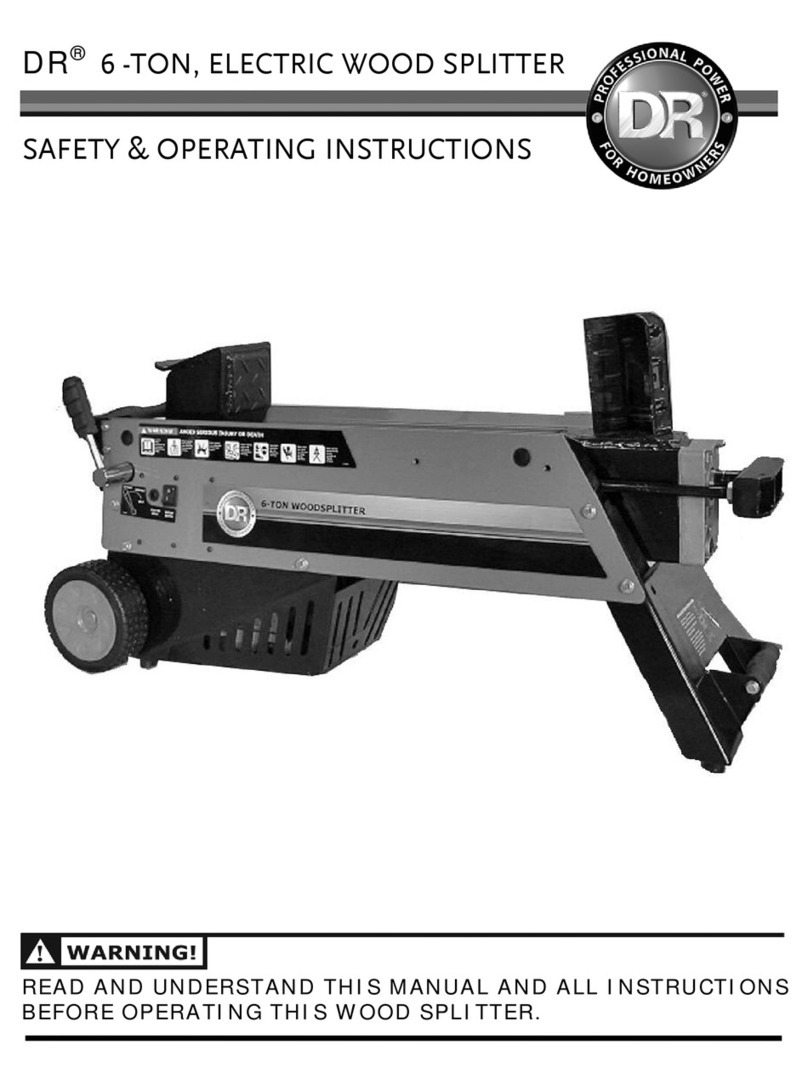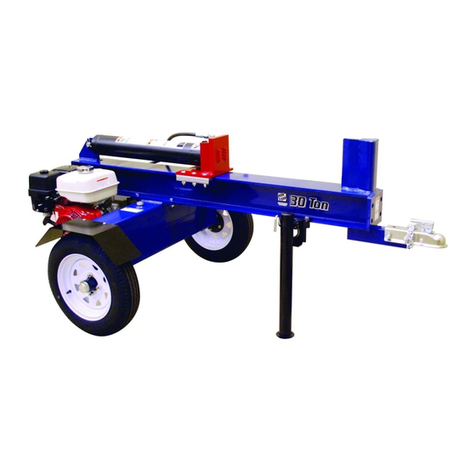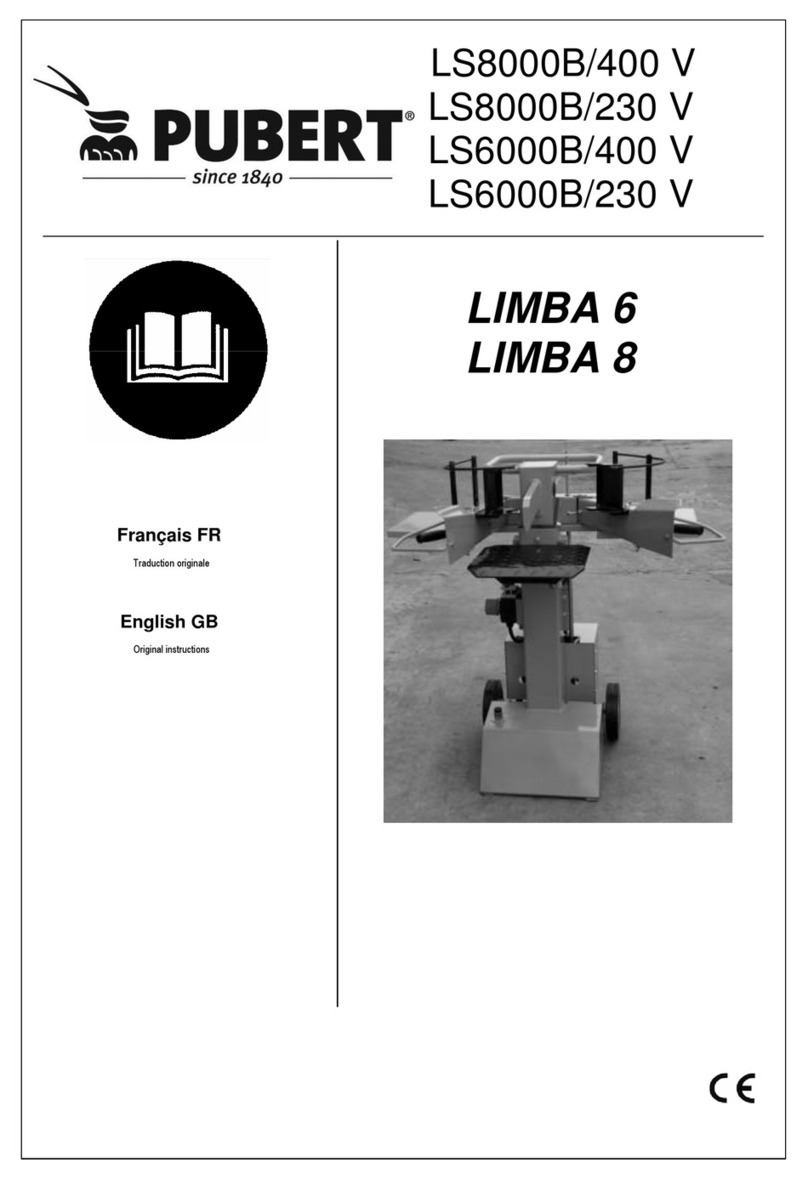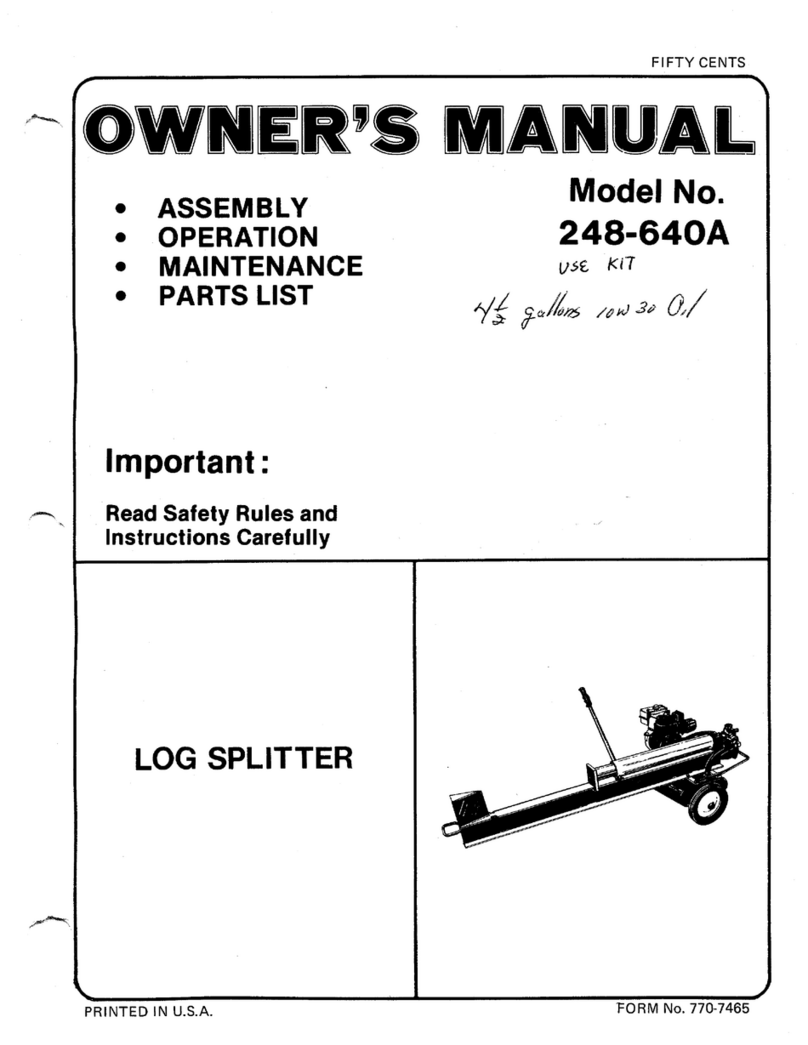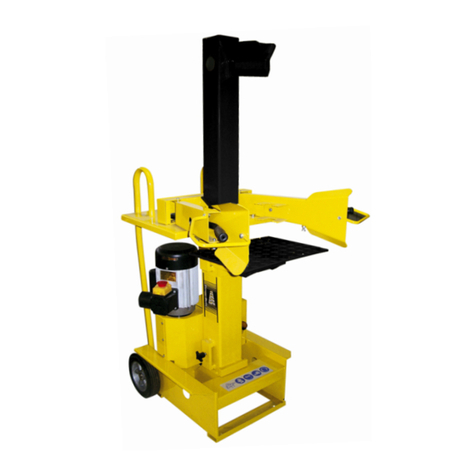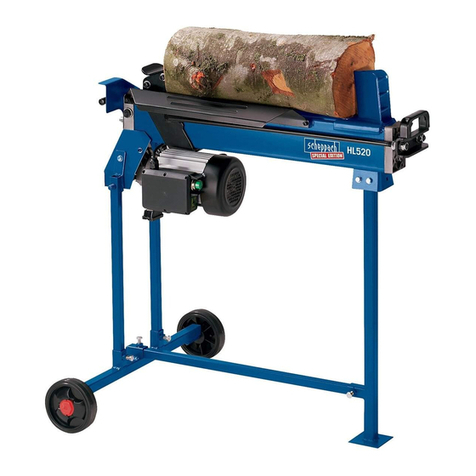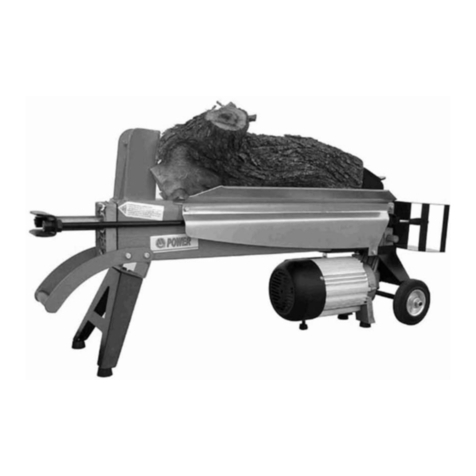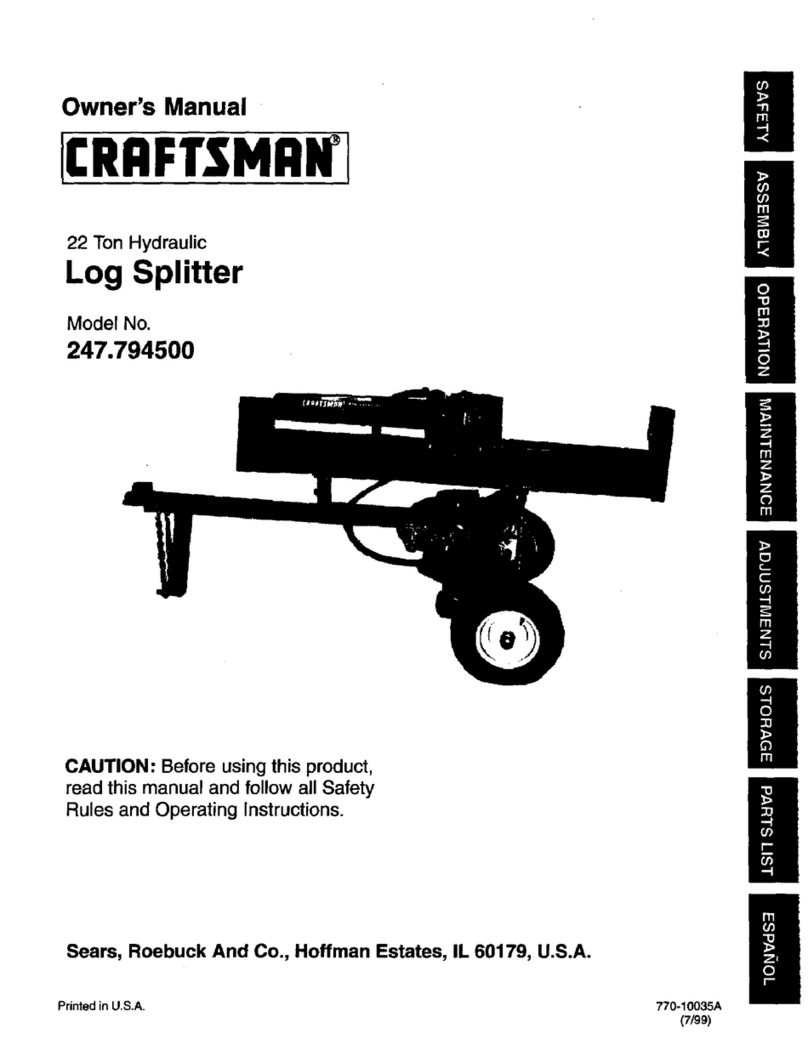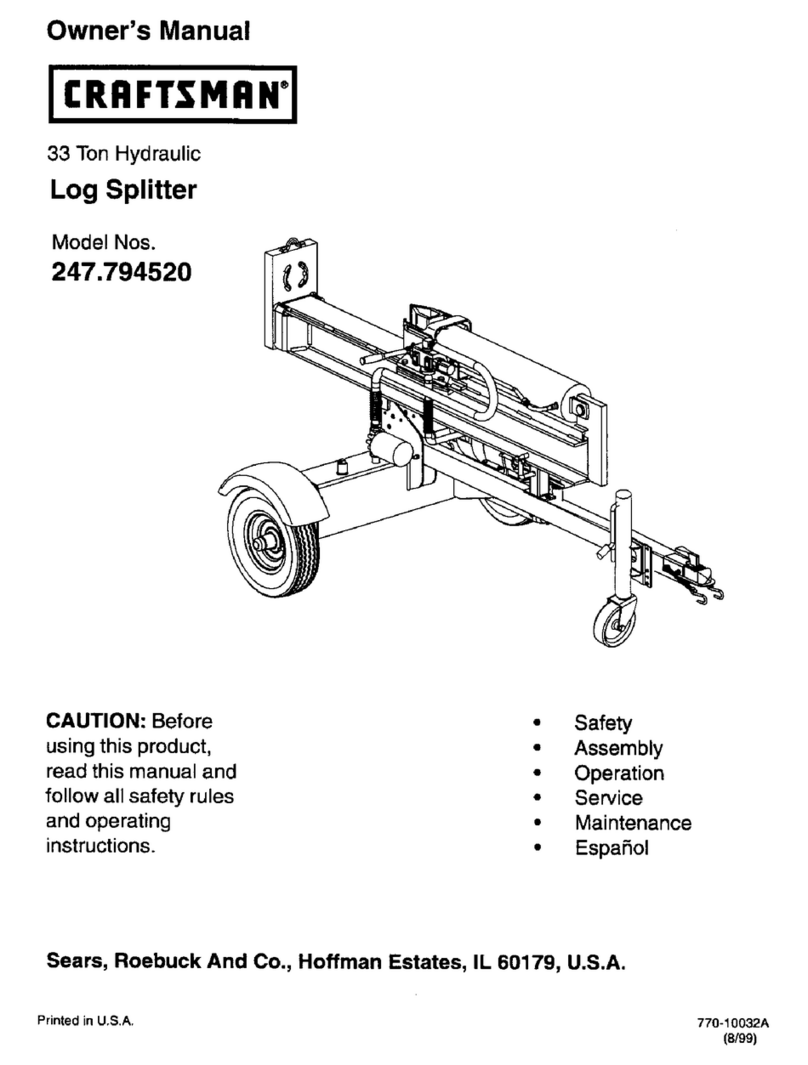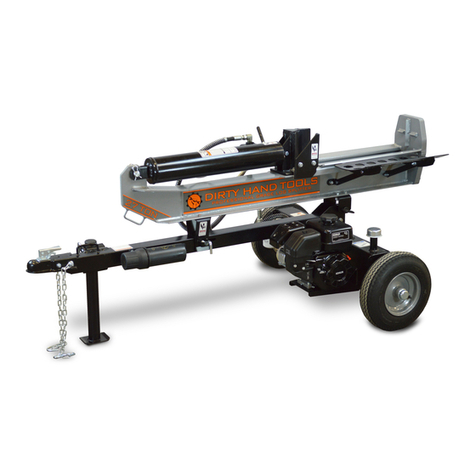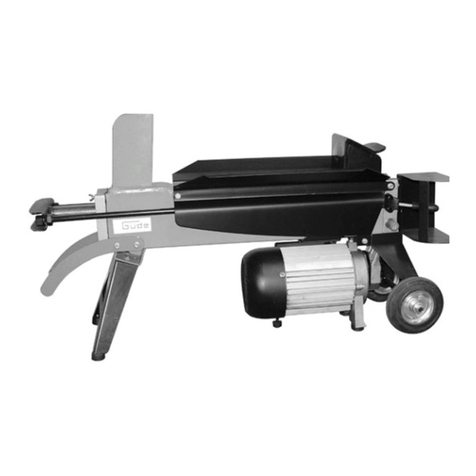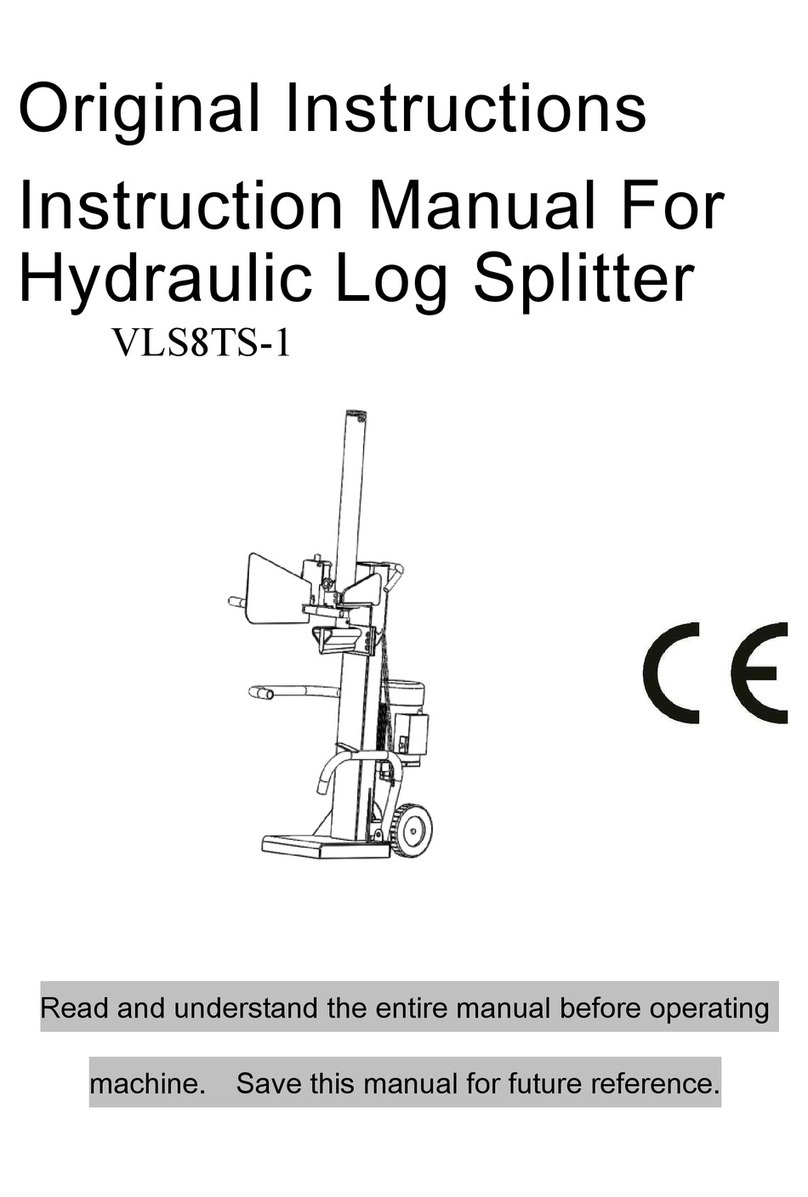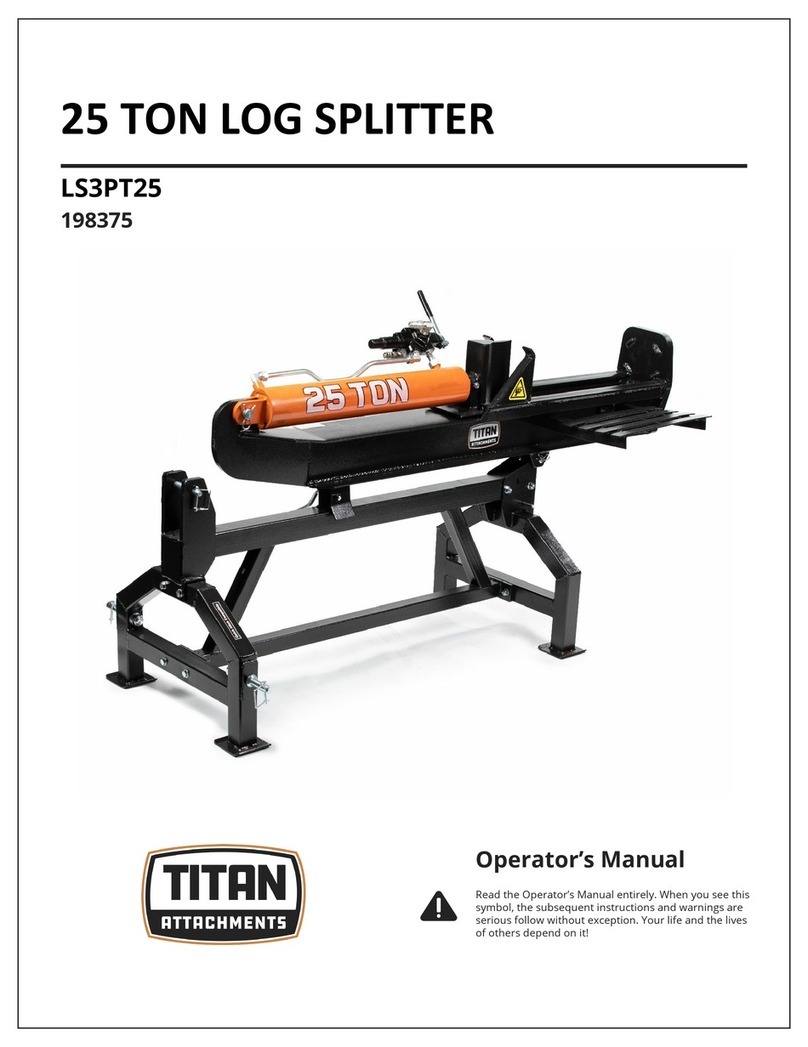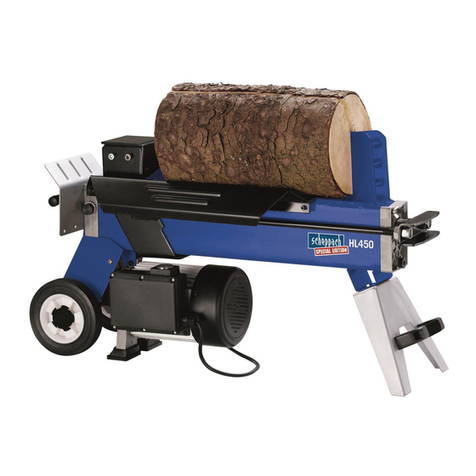•For logsthat are not cutsquare, the longest
portionofthe logshouldbe rotateddownand
the most square end placed againstthe splitting
wedge.
•Keep your work area clean. Immediately
remove splitwood aroundyoursplittersothat
you do notstumble over it. Clean chipsand dirt
offend plate (wood platform)after each logis
split, orwhenever necessary tomaintainflat
contact between wood and end plate (platform).
•Never move the logsplitterwhilethe engine is
running.
•Never leave yourlogsplitterunattendedwiththe
engine running. Shut offthe engine ifyou are
leaving your splitter,even for a shortperiodof
time. Someone could accidentallyactivatethe
splittingwedge and be injured.
•Do not runengine Inan enclosed area. Exhaust
gases contain carbon monoxide.This ododess
gas can be deadly when inhaled.
•Be careful notto touchthe mufflerafterthe
engine has been running.Itwillbe HOT!
•If the equipment shouldstarttovibrate
abnormally, stop the engine and check
immediately for the cause. Vibration isgenerally
a warning oftrouble.
When cleaning, repairingor inspecting,make
certain all movingparts have stopped.
Disconnect the spark plugwire and keep the
wire away from the plugtoprevent accidental
starting.
Customer Responsibilities
•Do not operate your splitter inpoor mechanical
condition or when in need of repair.
• Periodically check that all nuts, bolts, screws,
hose clamps and hydraulic fittings are tight to be
sure equipment is in safe working condition.
Where appropriate, check all safety guards and
shields to be surethey are in the proper position.
Never operate your splitter with safety guards,
shields or other protective features removed.
These safety devices era for your protection.
• Replace all damaged or worn parts such as
hydraulic hoses and fittings immediately with
manufacturer approved replacement parts.
• Do not change the engine governor settings or
over_peed the engine. This increases the
hazard of personal injury. The maximum engine
speed is preset by the manufacturer and is
within safety limits.
• Do not alter your log splitter in any manner such
as attaching a rope or extensionto the control
lever or adding to the widthor height of the
wedge. Such alterations may cause your splitter
to be unsafe.
Performall recommendedmaintenance
procedures before you use yoursplitter.
Do not service or repairyour logsplitterwithout "
disconnectingthe spark plug wire and moving it
away from the spark plug.
Never storethe equipmentwith gasoline inthe
tank insideof a buildingwhere ignitionsources
are present, such as hotwater and space
heaters, clothesdryersand the like.Allowthe
engine to coolbefore stodngin any enclosure.
Always store gasolinein an approved, tightly
sealed container. Store the containerin a cool,
dry place. Do not store in abuildingwhere
ignitionsources are present.
To reducefire hazard, keep enginefree of grass,
leaves, woodchips, and excessive grease and
oil.
The hydraulicsystemofyourlogsplitterrequires
careful inspection,along withthe mechanical
parts. Be sure to replacefrayed, kinked, or
otherwise damaged hydrauliccomponents.
Fluidescaping from a vary small holecan be
almost invisible.Do notcheckfor leakswithyour
hand. Escapingfluid under pressure can have
sufficientforce to penetrate skin,causing
serious personalinjury.Leaks can be located by
passinga piece ofcardboard or woodover the
suspected leak and lookingfor discoloration.
Shoulditbecome necessary to loosenor
remove any hydraulicfitting or line, be sure to
relieveall pressure byshuttingoffthe engine
and movingthe controlhandle backand forth
several times.
Do not removethe capfrom thehydraulictankor
reservoirwhileyourlogsplitterisrunning.Hot oil
underpressure could cause injury.
The pressure reliefvalveon your splitteris
preset at the factory. Do not adjustthe valve.
Onlya qualifiedsentice technicianshould
performthisadjustment.
Completelydrain fuel tank priorto storage. This
guardsagainst accumulationoffuel fumes
whichcould resultin afire hazard.
Never store logsplitteroutside withouta
waterproofcover. Rainwillcause ruston the
insideofthe cylinder.
Important Information
Always:
•Useclean fluid and checkfluid level regularly
•Use Daxron III AutomaticTransmission Fluidor
10W non-foaminghydraulicfluid.
•Usea filter (clean or replace regularly)
Use a breather capon fluid reservoir
5




















